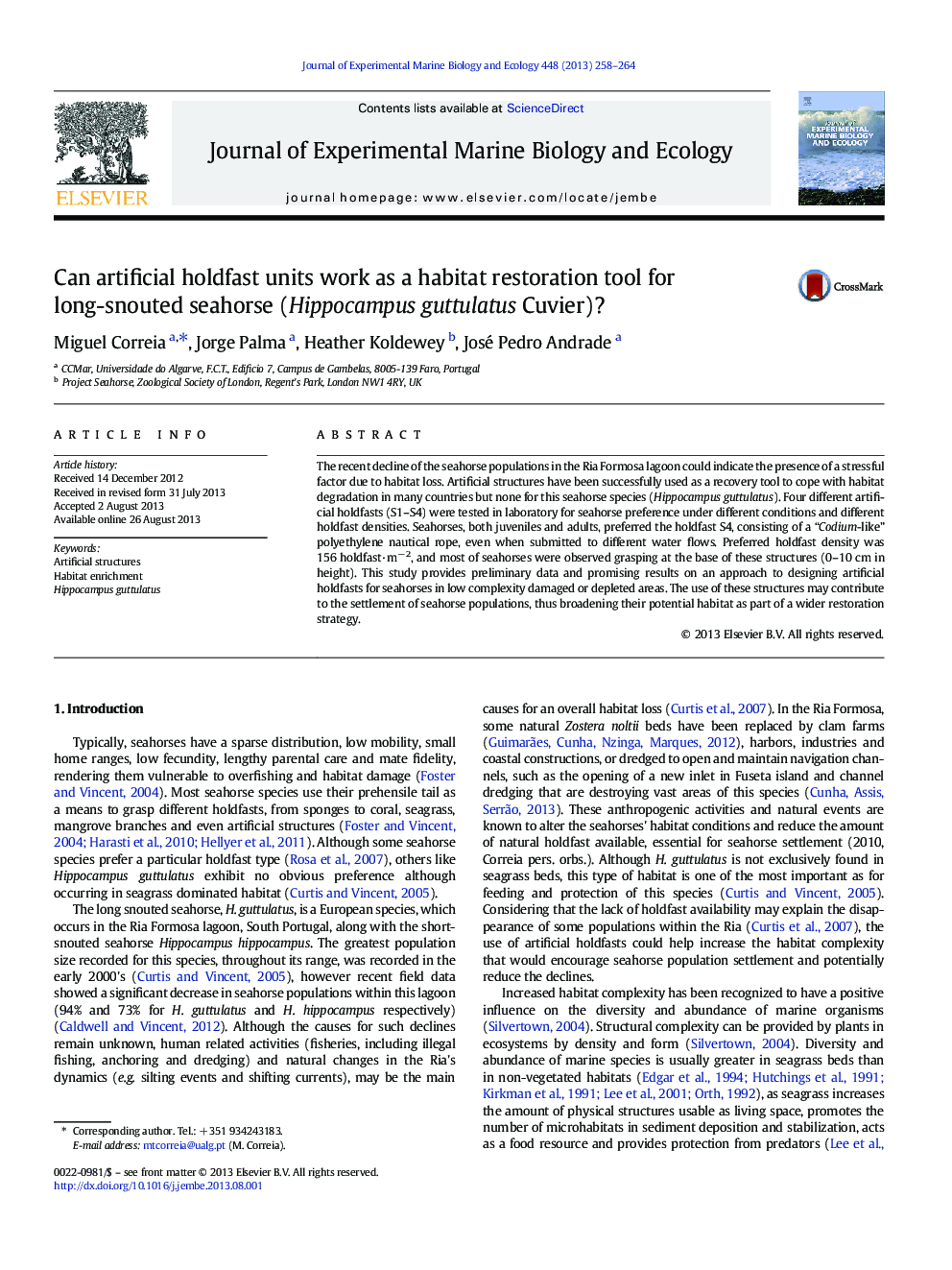| Article ID | Journal | Published Year | Pages | File Type |
|---|---|---|---|---|
| 6304403 | Journal of Experimental Marine Biology and Ecology | 2013 | 7 Pages |
Abstract
The recent decline of the seahorse populations in the Ria Formosa lagoon could indicate the presence of a stressful factor due to habitat loss. Artificial structures have been successfully used as a recovery tool to cope with habitat degradation in many countries but none for this seahorse species (Hippocampus guttulatus). Four different artificial holdfasts (S1-S4) were tested in laboratory for seahorse preference under different conditions and different holdfast densities. Seahorses, both juveniles and adults, preferred the holdfast S4, consisting of a “Codium-like” polyethylene nautical rope, even when submitted to different water flows. Preferred holdfast density was 156 holdfast·mâ 2, and most of seahorses were observed grasping at the base of these structures (0-10 cm in height). This study provides preliminary data and promising results on an approach to designing artificial holdfasts for seahorses in low complexity damaged or depleted areas. The use of these structures may contribute to the settlement of seahorse populations, thus broadening their potential habitat as part of a wider restoration strategy.
Related Topics
Life Sciences
Agricultural and Biological Sciences
Aquatic Science
Authors
Miguel Correia, Jorge Palma, Heather Koldewey, José Pedro Andrade,
